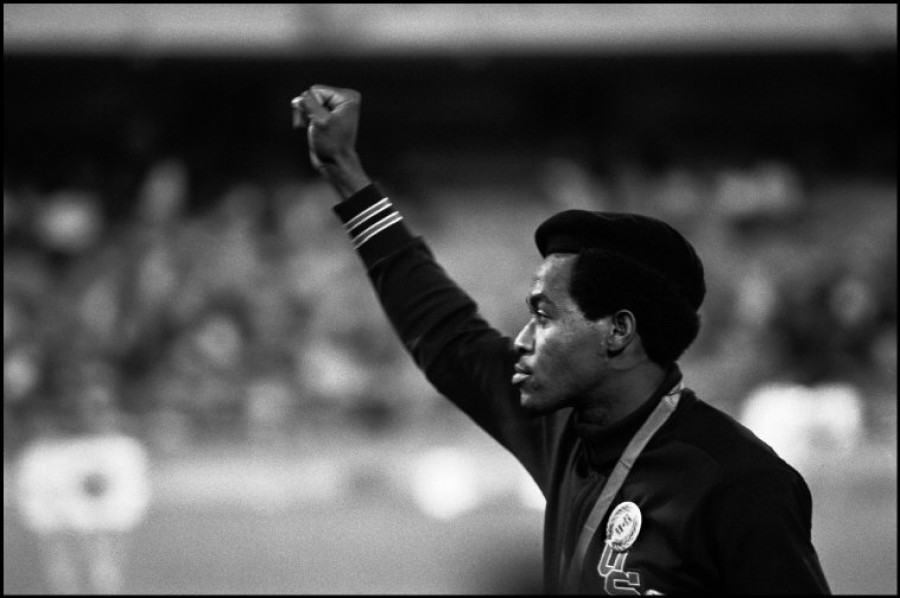EVENT | Signing of the book "J.O., Depardon" by Points edition
Saturday, September 14, from 4:00 PM to 6:00 PM
For this third solo exhibition at RX&SLAG, French photographer Raymond Depardon presents a series of photographs taken during four editions of the Olympic Games. In line with current events, this exhibition on the Olympic Games features 16 black-and-white images, illustrating the Summer Games in Tokyo, Mexico City, Munich, and Montreal.
When Raymond Depardon was sent to Tokyo to cover the 1964 Summer Olympics, he had been a photojournalist for the Dalmas agency for four years. This experience allowed him to take his first steps as a sports photographer, and it was a successful trial, as he would ultimately cover six Olympic Games, up to the Moscow Games in 1980.
Tokyo: Summer Olympics (1964)
Twenty years after the end of World War II and the dramatic events of Hiroshima and Nagasaki, Japan opened up to the world by hosting the Olympics. Inexperienced in sports photography, Raymond Depardon faced challenges due to weather conditions and the distance between his position and the track where athletes performed.
Mexico City: Summer Olympics (1968)
"These were the most beautiful Olympic Games" - this is how Raymond Depardon describes this event. Preceded by a bloody repression by the Mexican government, these Games were marked by a series of broken records and historical events. The raised fist of African-American athletes on the podium will forever remain an image of the civil rights struggle.
Munich: Summer Olympics (1972)
Sadly marked by the hostage-taking of the Israeli delegation by the Palestinian revolutionary armed group Black September, these Games took place in a unique atmosphere. That year, Raymond Depardon managed to capture swimmer Mark Spitz, who won 7 medals.
Montreal: Summer Olympics (1976)
For these Olympics, it was the young Romanian gymnast, Nadia Comăneci, who particularly impressed Raymond Depardon. Her discipline and talent made her the star of the early Games, and the now-experienced photographer took shots that graced the covers of numerous magazines in France.
During these events, the photographer learned that to capture the beauty of the moment, one must anticipate it. This is how he managed to freeze feats, strength, and extreme emotion: Michel Jazy's despair after his defeat in the 5,000 meters in Tokyo (1964), Colette Besson's radiant joy winning the 400 meters in Mexico City (1968), or the grace and perfection of Romanian gymnast Nadia Comăneci in Montreal (1976). These are images now etched in sports history.
But Raymond Depardon also captures other moments, historical facts that go far beyond the realm of sports. Through his images, a narrative of the Cold War and social struggles is written, resonating half a century later. There are indeed many parallels to be drawn between the hostage-taking of the Israeli delegation in Munich in 1972 and current events in the Middle East, or between the raised fist of African-American athletes in Mexico City in 1968 and the Black Lives Matter movement.
The 8 photographs of Raymond Depardon exhibited at the gallery, part of the course of L'Art Dans La Ville in Paris, are accompanied by a film directed by Simon Depardon, recounting the context of each shot.
